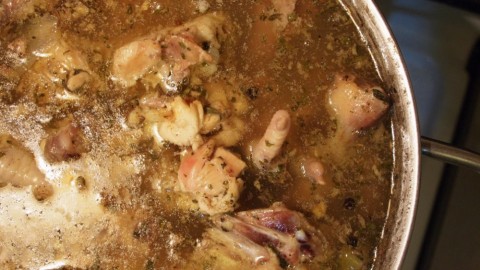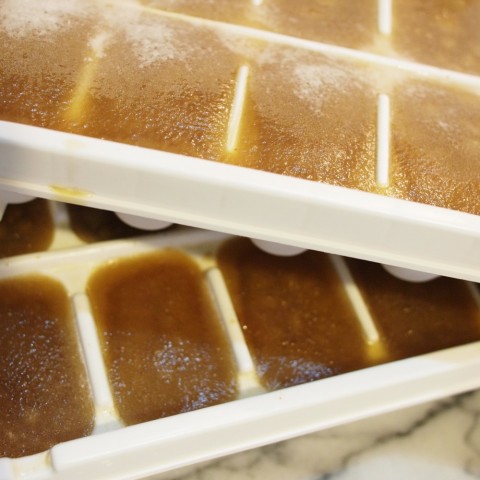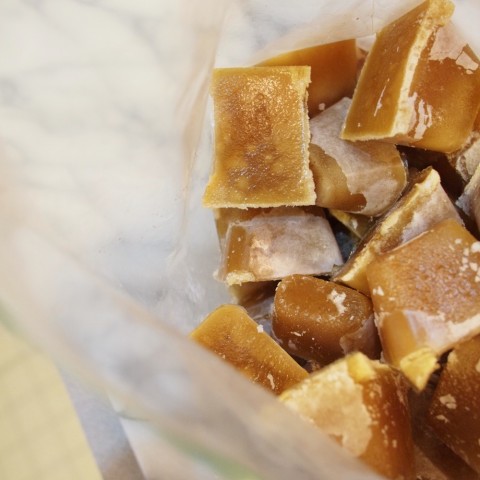Standing by the counter at Godshall’s Poultry, waiting for my number to be called, I found myself chatting with the woman ahead of me in line. Like me, she had come for stock-making provisions — pieces and parts, cheap bits, to populate her pot. She pointed the poultry man in the direction of the necks and backs, then toward the stripped breast bones. And while he was working on her order, I asked her: Have you tried chicken feet in your stock?
She cringed, and made a little noise of revulsion. Really? Chicken feet? But they’re so — gross.
I told her that they are. A little bit. But that never have I made better stock than when I include a pound or two — or three — in with the rest of my chicken trimmings.
I am a believer that stock should be mostly a matter of leftovers — that one should freeze the carcasses of roasted chickens, then toss them in a pot with mirepoix, herbs, and a tiny bit of salt, and let the whole thing go at a simmer until it’s time for bed. But experience has led me to the conclusion that stock can’t just be from leftovers. The bones of roasted birds past have lots of flavor, but they never have quite enough gelatin left in them to impart the richness — the mouth-feel — that makes using stock in a recipe a step up from water, or wine, or something else. And nothing imparts more gelatin, more richness, than feet.
I chatted with the woman for a while longer, describing to her the Jello-like consistency of my cooled stock, telling her about the wondrous risottos it had made and the squash soup that was just a little ways down the line (this was right before Thanksgiving). And eventually, I guess I wore her down.
Also, she told the poultry man, I’ll have a pound of chicken feet. To try.
She paid for her chicken bits, and turned to go. But before she left, she told me in a most serious tone: Now I’m going to give this a try. And I hope it’s good. Because if it’s bad — I’m holding you responsible.
In all seriousness, though: Chicken feet do look — gross. But they are the world’s best addition to stock. They add body to your liquid without adding too much flavor, which is good, because you want stock to be rich without overwhelming the flavors of whatever you’re cooking. Buying them prevents massive amounts of perfectly serviceable chicken parts from getting thrown away, or processed into McNuggets, or whatever it is they do to the bits that don’t get eaten. And in using them, you are connecting with a culinary tradition that goes back hundreds of years. You are cooking like somebody’s grandmother. And there is nothing inherently cooler than that.
Anyway, here is now you make the stock*
2-3 lbs. Leftover Chicken Carcasses
2-3 lbs. Chicken Feet (you should have about 5 lbs of chicken parts in total, any way you divvy it up)
2 Onions, roughly chopped
2 Carrots, roughly chopped
3 Ribs of Celery, roughly chopped
3 Bay leaves
Fresh Parsley
Dried Thyme
10-20 Whole Black Peppercorns
Salt (just a little; you want to be able to control the seasoning later)
To an eight-quart stock pot, add your chicken parts, onions, carrots, celery, herbs, and salt. Then fill the pot with cold water until it covers all the solids (preferably by an inch or two, though I recognize that that’s not always possible). Heat on the stove on high until the contents of the pot reach about 190F, then turn the stove down to low, and allow to simmer, covered or uncovered, for about six hours.
You may want to stir occasionally, though that isn’t a requirement.
At the end of the six hours, pour your stock through a fine mesh strainer, pressing down on the solids with the back of a ladle to squeeze out any clinging juices. Strain a second time (I do this, but you don’t absolutely have to). Then cool the stock in a water bath and get it into the refrigerator ASAP (important, because bacteria starts growing in chicken stock super quickly).
The next morning, remove the stock from the fridge. The fat should have solidified on the top, and the stock itself should have a gelatinous consistency. Skim off all the fat, then return the stock to the stove, bring it back to a boil, and allow it to reduce until just four cups remain.
Cool the reduced stock (again, in a water bath if you can), then pour into two ice cube trays and freeze. The stock can later be reconstituted for use at a ratio of one cup of water to one cube of stock.
Strictly speaking, reducing and cubing the stock is not absolutely necessary. But it makes having home made stock in the house so convenient that you’ll never want to eat that over-salted store-bought slop again.
Trust me.
* For the record, I am aware that somewhere in the legacy posts I ported over from Livejournal, there is a similar recipe floating around.




